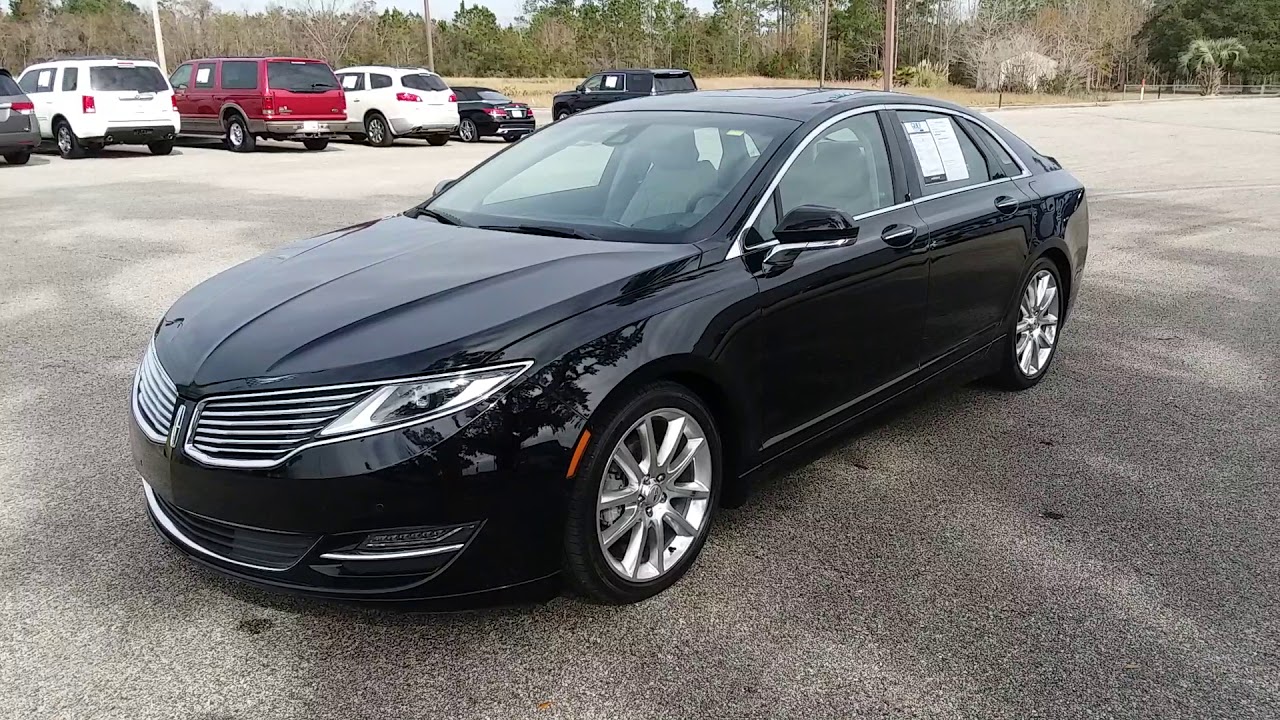A hybrid or electric vehicle (EV) is a strong choice when gas prices are high and environmental concerns are top of mind. Even better, some of the most durable hybrids can stay on the road for well over 130,000 miles.
According to a study conducted by iSeeCars, several hybrids ranked among the vehicles with the longest lifespans over the past two decades.
Below are five standout hybrid cars known for their longevity, including well-known models like the Toyota Prius and Hyundai Sonata Hybrid.
Hybrids With Proven Longevity
In a world where efficiency and sustainability are more important than ever, hybrid vehicles have carved out a firm place in the automotive landscape.
But while fuel economy and eco-friendliness often take center stage, there’s another crucial factor savvy buyers look for—longevity. Not all hybrids are created equal when it comes to lasting performance and durability over the long haul.
Whether you’re a daily commuter, a road-trip warrior, or just want a vehicle that will go the distance with minimal fuss, this article explores hybrid models that have stood the test of time. These are the hybrids known not just for sipping fuel, but for delivering dependable, long-lasting service mile after mile.
Toyota Prius
The Toyota Prius stands out as the top hybrid vehicle for long-term durability. In the iSeeCars study, it earned the highest potential lifespan among 10 hatchbacks, sedans, and SUVs.
On average, a Toyota Prius can last up to 250,601 miles about 5,000 miles more than the second-place Toyota Highlander.
The Toyota Prius is among the best hybrid cars for long-lasting ownership.
Not only that, but the Prius ranked sixth overall in the iSeeCars longevity study. It placed above the Chevrolet Tahoe and just behind the GMC Yukon XL both of which are gas-powered SUVs.
That’s encouraging news for anyone seeking maximum lifespan from their environmentally-friendly hatchback.
The Toyota Prius has long stood as a symbol of hybrid innovation, establishing itself as a go-to choice for fuel efficiency and environmental consciousness.
Over the years, the Prius has evolved into a diverse lineup, and with its extended presence in the market, distinguishing between the different models can be confusing. So, what exactly are the Toyota Prius models, and how do they differ? Let’s explore the evolution of this iconic hybrid in detail.
The story begins in 1997 with the launch of the first-generation Prius, known as the NHW10. This compact hatchback was groundbreaking for its time, pairing a gasoline engine with an electric motor to deliver remarkable fuel efficiency. While its design was unconventional, it marked a major step forward in the shift toward sustainable transportation.
In 2003, the second-generation Prius (NHW20) arrived, featuring a more aerodynamic and streamlined exterior that boosted its efficiency even further. Technological improvements in the hybrid system enhanced both performance and economy, and the Prius began to take on a new identity—not just as a fuel-saver, but as a statement of environmental responsibility.
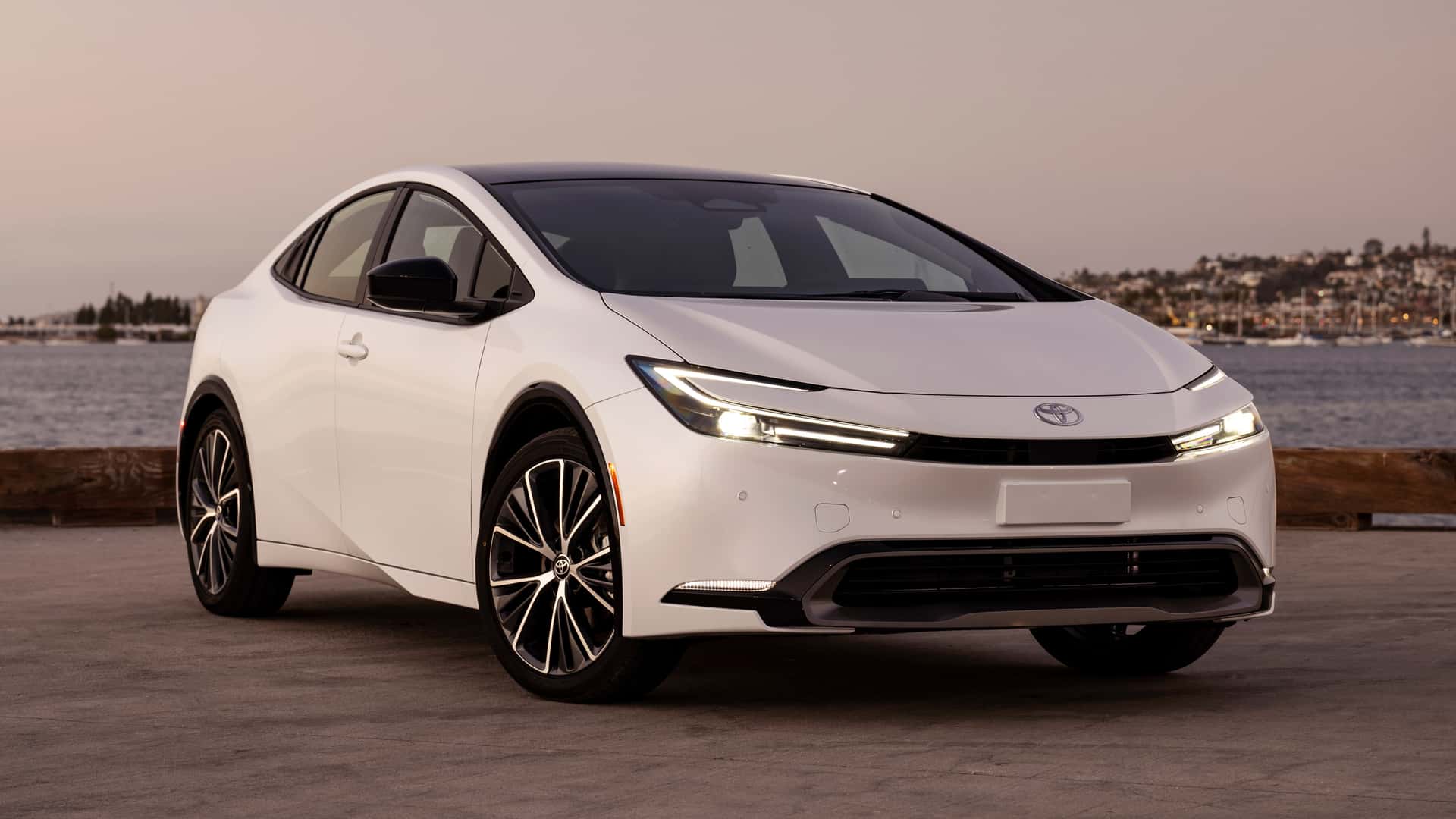
By 2009, the third-generation Prius (ZVW30) had refined the hybrid formula. It introduced a sleeker, more modern design, along with a larger and more comfortable interior that made it more practical for families.
The hybrid powertrain continued to improve, offering even better fuel economy and a more seamless driving experience. This generation also expanded the Prius family to include new variants aimed at specific market needs.
In 2015, Toyota released the fourth-generation Prius (ZVW50), which represented a significant leap in both design and technology.
It featured a bold, futuristic exterior, a more spacious and comfortable cabin, and an even more efficient hybrid system. This generation also introduced Toyota Safety Sense, a comprehensive suite of active safety technologies that quickly became standard across the Toyota lineup, further enhancing the Prius’s appeal.
The Prius family expanded once again in 2016 with the introduction of the Prius Prime, a plug-in hybrid that blends traditional hybrid efficiency with the convenience of electric driving. Capable of traveling up to 25 miles on electricity alone, the Prime is an excellent option for short commutes while maintaining the flexibility of a hybrid system for longer trips.
From its pioneering roots to its latest plug-in innovation, the Toyota Prius has grown into a well-rounded lineup of hybrid vehicles. Each model is crafted to meet different driving needs while staying true to the Prius’s core values of efficiency, practicality, and environmental responsibility.
Toyota Camry Hybrid
Much like the Prius, the Toyota Camry Hybrid also performs well in terms of longevity. It boasts an average potential lifespan of around 230,547 miles.
That places it third among hybrid cars, hatchbacks, and SUVs in terms of long-term ownership.
However, the Camry Hybrid comes in last on the list of the 20 most popular models with the longest projected lifespans.
The Toyota Camry Hybrid, like the Sonata Hybrid, is among the best hybrid cars to go the distance.
It’s worth noting that many vehicles at the top of the overall list are traditional SUVs and trucks, such as the Toyota Sequoia and Chevrolet Suburban. That’s quite impressive for a car utilizing a complex hybrid gas-electric powertrain.
The new Toyota Camry remains unmistakably a Camry, but it now carries clear cues of Lexus influence. The exterior design, while still conservative, represents a refined evolution.
It features C-shaped daytime running lights and slimmer LED headlights connected across the front by a narrow slit, complemented by claw-like tail-lights that align with Toyota’s contemporary ‘Hammer Head’ design language.
Although the side profile and wing mirrors are carried over from the previous generation, Toyota has clearly borrowed from its luxury sibling, Lexus, to elevate the Camry’s premium appeal.
A standout addition to the color palette is Precious Bronze, a new option priced at an extra $587, evoking Lexus’ Sonic Copper hue. The updated honeycomb pattern on the lower grille draws parallels with the design seen on the Lexus RX.
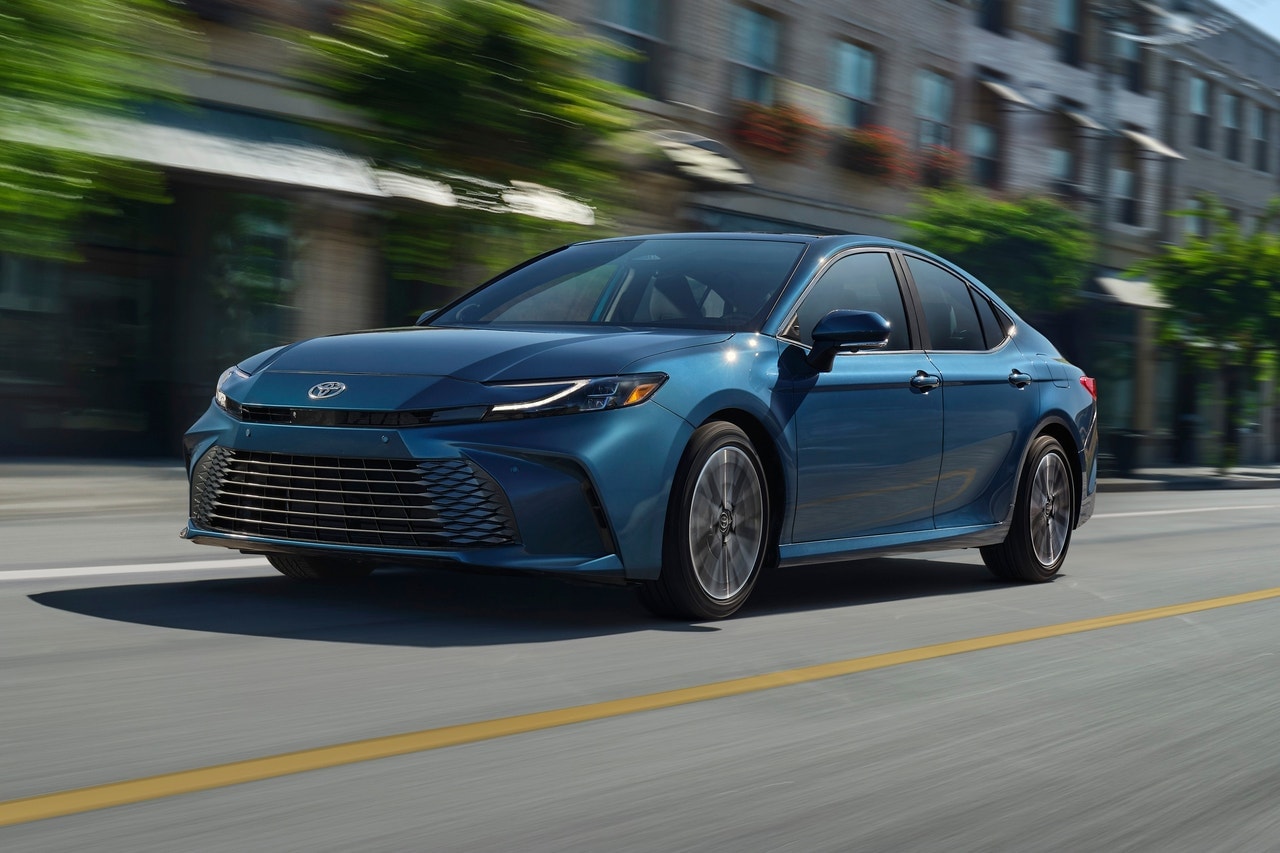
Even the Camry badging has been subtly refined—it now appears more slender, flatter, and spaced farther apart on the tailgate, keyfob, carpets, and door sills. Reflecting Toyota’s evolving hybrid identity, the hybrid badge now simply reads ‘HEV’ (Hybrid Electric Vehicle), and the blue tint previously found in the Toyota logo is gone.
Inside, the changes are more substantial, though it’s important not to expect luxury-car levels of refinement. The 2025 Camry boasts a cleaner dashboard design with gloss black trim that connects the air vents, offset by fabric accents beneath.
A more integrated touchscreen display, updated climate controls, and a redesigned steering wheel bring the cabin in line with modern expectations. However, the overall cabin ambiance remains muted, with a monotone color scheme, dark headliner, and armrests that exhibit a vinyl grain. Silver plastic trims attempt to add contrast, though they fall short of mimicking real metal convincingly.
Despite these shortcomings, material quality is generally solid. Fabric inserts feel more refined than those found in Toyota’s bZ4X, and details like knurled finishes on air vents and tactile buttons, including the gear shifter, contribute to a more satisfying user experience.
That said, practicality and cost-conscious choices are evident. The rear armrest simply drops onto the seat instead of being hinged, and the extensive use of gloss black trim across the dashboard and center console raises concerns about long-term durability. Closing the fuel door reveals a tinny, hollow sound, further hinting at corners cut in material quality.
In terms of practicality, the 2025 Toyota Camry Hybrid Ascent Sport maintains its reputation as a sensible family sedan. It measures 4290mm in length, 1840mm in width, and 1445mm in height, with a 2825mm wheelbase and 145mm of ground clearance.
The 524-litre boot is impressively large and deep, featuring a convenient handle that allows for one-handed closing of the light tailgate—an ergonomic edge over competitors like the Hyundai i30 Sedan. The rear seats fold in a 60:40 split via latches in the boot, though Toyota doesn’t specify the expanded cargo volume when folded.
Still, a few drawbacks remain. A noticeable loading lip means lifting luggage over the bumper requires extra effort. The two bag hooks in the boot are awkwardly placed on the far sides, limiting their convenience.
Additionally, a single halogen boot light provides poor illumination, and exposed metal and visible wiring reinforce signs of budget-conscious construction. Despite these caveats, the Camry remains a well-rounded package with meaningful updates that blend reliability with a touch of newfound elegance.
Hyundai Sonata Hybrid
According to the iSeeCars study, the Hyundai Sonata Hybrid ranks as the third-longest-lasting vehicle of its type.
The four-door sedan offers a potential lifespan of approximately 184,887 miles.
While that’s roughly 45,660 miles fewer than the Camry Hybrid, the Sonata still makes the list of longest-lasting hybrids. However, the model did not break into the overall top 20 list.
The 2025 Hyundai Sonata Hybrid comes impressively close to being a car that suits nearly every type of driver. With its striking exterior styling, refined and upscale interior, and outstanding fuel efficiency, this midsize sedan stands out as a strong contender in its class.
Even before its latest refresh, the Sonata Hybrid already had an attractive design, but the updated look brings it firmly in line with Hyundai’s modern design language. Inside, it boasts an abundance of high-tech features, including large dual digital displays that enhance both functionality and aesthetic appeal.
The Sonata Hybrid delivers a ride tuned more for comfort than performance, favoring plush suspension and refined driving manners over sporty handling.
While acceleration isn’t a standout—it’s on the slower side—the cabin remains quiet and composed, with solid body control and suspension damping that absorbs most road imperfections with ease. Steering is light yet precise, making city driving and highway cruising effortless.
The six-speed automatic transmission typically performs well in normal driving conditions, selecting the right gear when accelerating from a stop or merging onto the freeway. However, it does fall short during more spirited driving, where the tendency to shift frequently can detract from the overall experience.
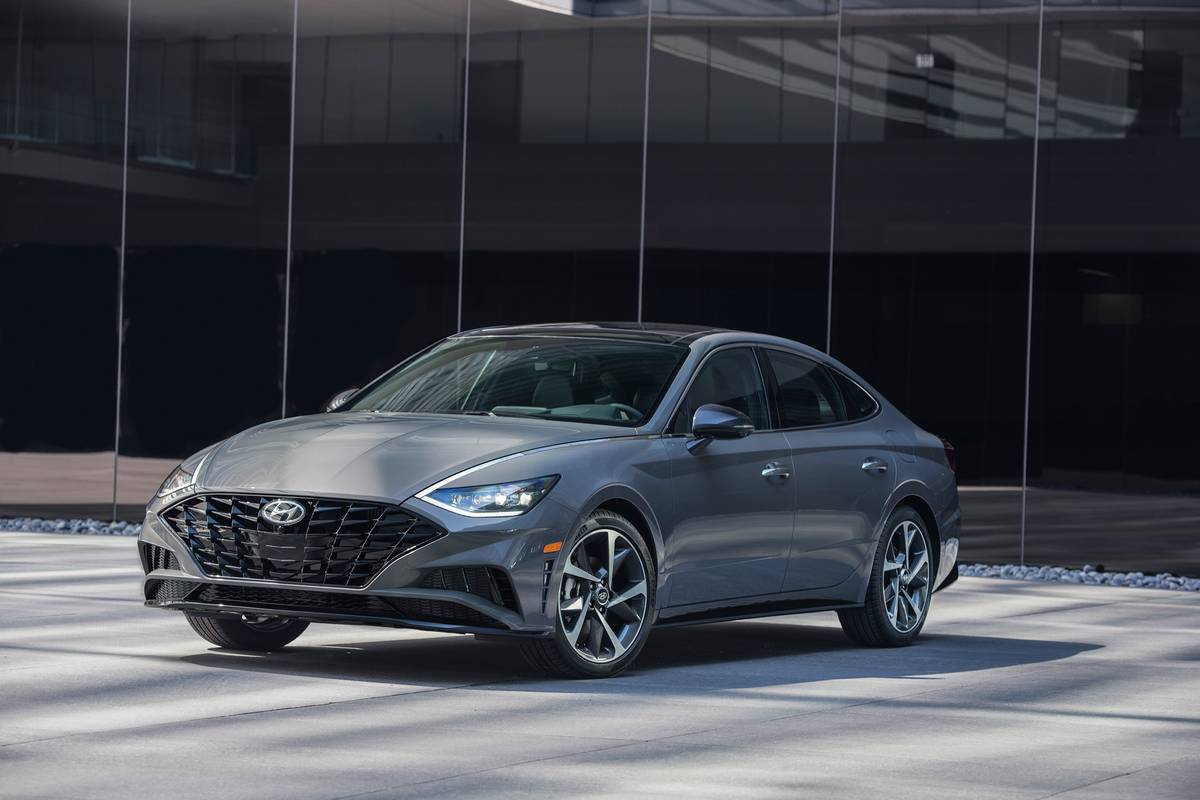
In day-to-day driving, the Sonata Hybrid is calm, composed, and thoroughly enjoyable. It also happens to be one of the most well-equipped vehicles in its segment, offering a comprehensive suite of the latest driver assistance technologies. As long as rapid acceleration isn’t a priority, the 2025 Sonata Hybrid proves to be a reliable and compelling choice.
When it comes to performance and efficiency, every trim level of the 2025 Sonata Hybrid is powered by a 2.0-liter inline four-cylinder engine paired with a 51-kW electric motor. This setup produces a combined 192 horsepower, all of which is delivered to the front wheels via a six-speed automatic transmission.
During testing, the Sonata Hybrid accelerated from 0 to 60 mph in 8.6 seconds—modest but acceptable for the segment. Braking performance is solid, with the car stopping from 60 mph in 117 feet. Hyundai also includes paddle shifters, which allow the driver to adjust regenerative braking levels for a more customized driving feel.
Fuel efficiency is another major highlight. While official figures for 2025 are expected to remain unchanged from the previous year, that still puts the Sonata Hybrid at the top of its class. The 2024 model achieved an EPA-estimated 44 mpg in the city and 51 mpg on the highway, with a total driving range of 620 miles—numbers that make it one of the most fuel-efficient midsize sedans available.
Kia Optima Hybrid
The Kia Optima Hybrid is another strong contender on iSeeCars’ list of hybrids with the greatest longevity. This model offers an average potential lifespan of about 183,632 miles.
That puts it in close proximity to its corporate sibling, the Hyundai Sonata. The Optima secured the fifth spot on the best hybrid car longevity list, coming in just ahead of the Lincoln MKZ. The Kia Optima Hybrid, like the Sonata Hybrid, is a long-lasting hybrid.
The 2020 Kia Optima features eye-catching styling and an appealing list of features, yet it finds it difficult to distinguish itself in a competitive field filled with more desirable alternatives. This bold midsize sedan offers a wide variety of engine choices, including hybrid and plug-in hybrid powertrains, but neither its performance nor its fuel efficiency exceed average expectations.
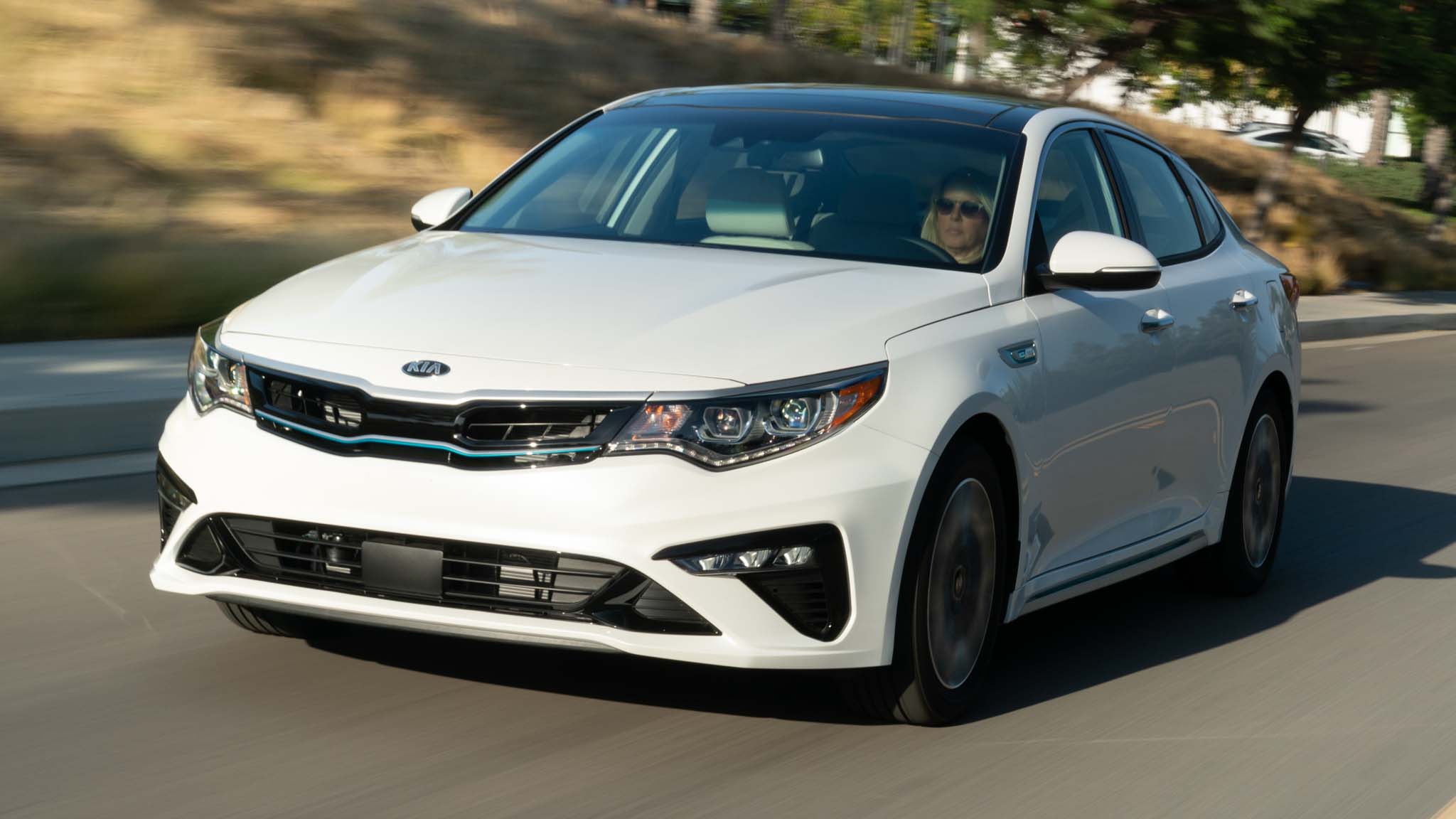
One of the Optima’s standout strengths is its unmatched powertrain warranty, along with impressive safety ratings that bolster its appeal. However, it does fall short in a few key areas—namely, a rear seat that is smaller than what some rivals offer, and diminished trunk space in the hybrid variants.
On the upside, the Optima boasts a solidly constructed interior that reflects attention to quality, along with a generous array of standard driver-assistance features that enhance safety and convenience.
Despite lacking the engaging driving dynamics found in some competitors, the 2020 Kia Optima remains a practical and well-rounded choice for families who prioritize comfort, safety, and value in a sedan and aren’t particularly concerned with spirited performance.
Lincoln MKZ Hybrid
The Lincoln MKZ Hybrid offers an average potential lifespan of approximately 177,678 miles. Notably, this gives it an edge over the only other American hybrid sedan on the list the Ford Fusion.
That said, the Lincoln MKZ’s average lifespan is quite close to that of the Fusion Hybrid, with a difference of fewer than 2,000 miles.
While Lincoln has shifted much of its focus toward electric vehicles and eye-catching SUVs like the all-new Aviator, it continues to produce premium sedans such as the 2020 MKZ—for now, at least.
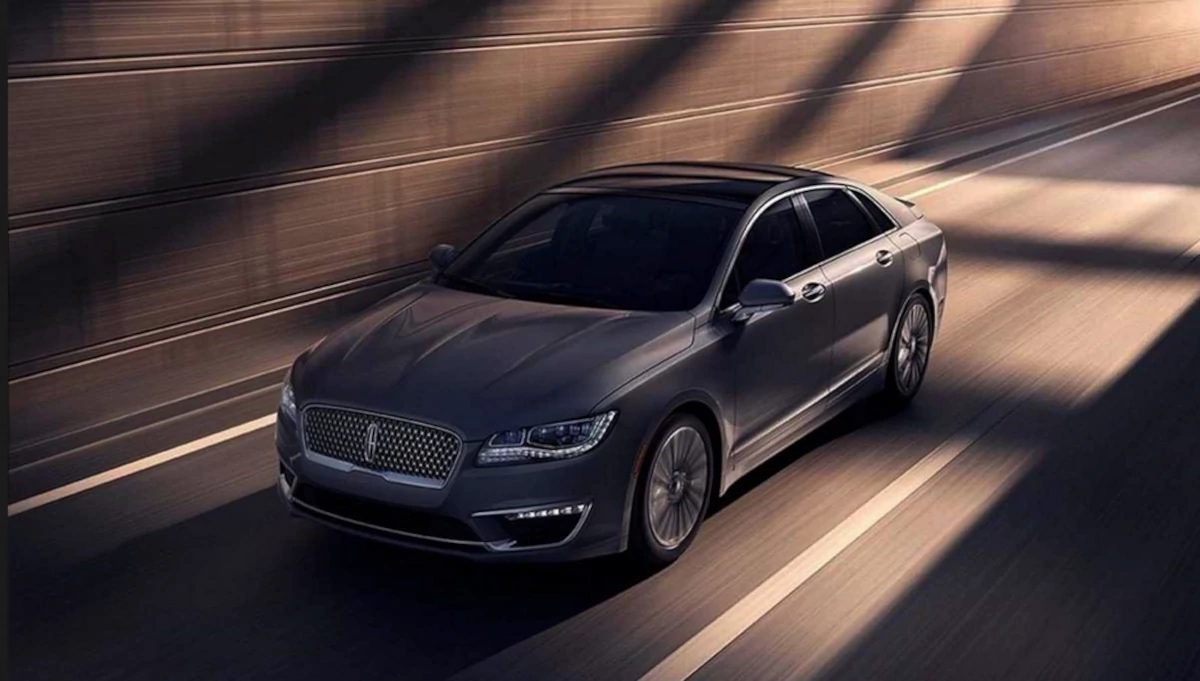
Those in search of a nimble, sharp-handling entry-level luxury car may want to look elsewhere. However, buyers seeking a smooth and comfortable ride paired with attractive features and options should take note. Lincoln has managed to give the aging MKZ just enough flair to appeal to loyal fans of the brand.
The MKZ lineup includes available all-wheel drive, an energetic twin-turbo V-6, and a fuel-efficient hybrid model, although the standard four-cylinder engine delivers only average performance.
Still, every 2020 MKZ comes with a refined interior and a generous suite of driver-assistance technologies. The overall experience, while comfortable and well-equipped, doesn’t quite match the excitement or polish of Lincoln’s more modern offerings—but it remains a respectable choice in the right context.
Hybrids With Costly Failures
The shift toward an electrified automotive future now appears inevitable. Numerous developed nations have introduced legislation aimed at phasing out the sale of internal combustion engine vehicles, commonly referred to as “ICEs.”
With the deadlines for these bans quickly approaching, consumers will soon feel the impact firsthand. Although the ultimate objective is to transition all passenger vehicles to fully battery-electric models, or “BEVs,” hybrid vehicles offer a valuable compromise.
They allow drivers to become accustomed to electric driving, lower local emissions, and help build demand for widespread charging infrastructure. One of the most significant hurdles in adopting these vehicles is, without a doubt, their high initial purchase cost.
Fortunately, with many hybrid models having been on the market for several years, there is now an opportunity to find more affordable used options.
However, a number of prospective buyers remain concerned about the long-term reliability of hybrids particularly in relation to battery life and the potential for costly repairs.
While internal combustion engines certainly have their own maintenance challenges and costs, they represent a well-established technology, which brings a level of reassurance.
If you’re considering making the leap and purchasing a hybrid, it’s important to know which models might be best avoided. “Consumer Reports” is a valuable resource to consult when evaluating a potential vehicle purchase.
According to their findings, certain models from BMW, Ford, and Chevrolet have proven to be among the least reliable hybrids currently available.
2020 Ford Escape Hybrid
The first Ford to appear on our list is the 2020 Escape Hybrid. With a starting price of just $29,510 when new, it offered an accessible path into hybrid vehicle ownership.
At that price point, buyers could opt for the “SE Sport Hybrid” trim. This model was powered by a 2.5-liter four-cylinder engine working alongside two electric motors, delivering a respectable combined output of 221 horsepower.
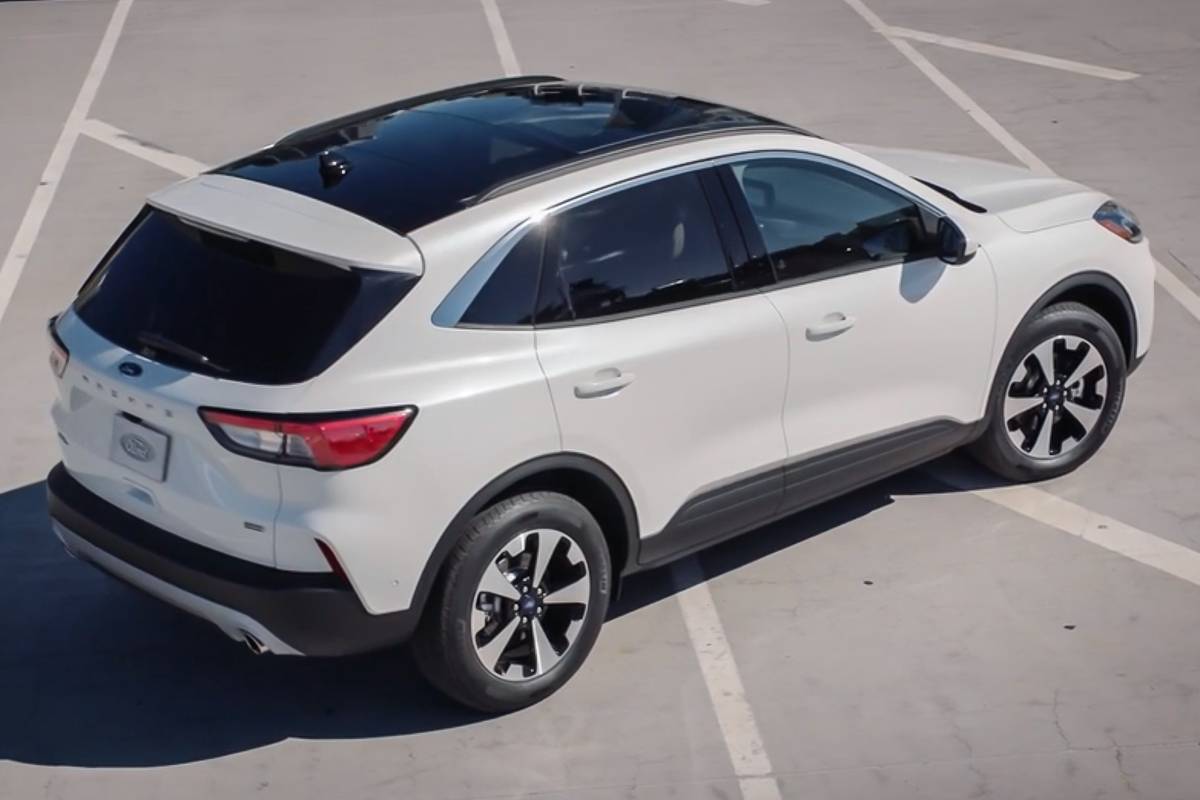
Consumer Reports noted that buyers were generally pleased with the driving dynamics, awarding the Escape Hybrid an overall driving experience score of 82 out of 100.
However, when it came to reliability, the vehicle didn’t perform nearly as well. The infotainment system was plagued by frequent crashes and malfunctions, causing frustration for many owners.
Even more troubling, both major and minor engine issues were reported with regularity, resulting in an overall reliability rating of just 1 out of 5.
2018 Chevrolet Malibu
The 2018 Chevrolet Malibu earned a disappointing 1 out of 5 rating for reliability from Consumer Reports, highlighting a range of persistent issues. Several key systems—such as the engine, transmission, suspension, and body integrity—were frequently flagged by owners as problematic.
One commonly reported issue involves a ratcheting noise when turning, which has been traced back to faults in the steering linkage. Additionally, the infotainment system has been a source of frustration, with multiple owners experiencing system freezes and difficulty pairing their phones.

While the 2018 model saw a slight improvement in terms of recalls—six issued by the NHTSA compared to nine for the 2016 model—it still fell short of expectations when it came to overall reliability.
Despite being classified as a mid-size sedan with family-oriented roots, the Chevrolet Malibu manages to blend attractive design with athletic performance.
It offers a selection of two well-tuned four-cylinder engines along with a hybrid powertrain that delivers impressive fuel efficiency. Its chassis is a highlight, striking a better balance between ride comfort and handling precision than many of its competitors.
2022 Ford Mustang Mach-E
When Ford introduced the Mustang Mach-E, it sparked a polarizing response. Many automotive enthusiasts argued that the terms “SUV” and “Electric” had no business being associated with a vehicle bearing the Mustang badge.
However, once the initial controversy settled, the Mach-E could be evaluated on its own merits.
One of its standout features is the stylish and contemporary interior, highlighted by a massive 15.5-inch vertically mounted touchscreen and sleek design elements.

Unfortunately, according to Consumer Reports, the vehicle suffers from a range of electrical and engine-related problems.
Based on their analysis, the Mustang Mach-E receives a reliability rating of just 1 out of 5.
Additionally, paint quality presents an unexpected issue, with Consumer Reports noting it is susceptible to “fading, chalking, cracking, or peeling.”
2017 Ford Focus
Among the Ford Focus model years on this list, the 2017 version receives a slightly better driver satisfaction rating.
Consumer Reports awarded it 2 out of 5, with owners specifically appreciating the comfort provided by the vehicle’s seats.
However, the reliability score tells a different story. Consumer Reports gives the 2017 Focus a disappointing reliability rating of just 1 out of 5.
Additionally, the vehicle has been subject to a relatively high number of recalls, so it’s essential to confirm that any necessary repairs have been completed before making a purchase. According to the NHTSA, five issues warranted recall.
These range from excessive fuel system vacuum pressure that could cause engine stalling, to transmission fluid leaks that pose a fire risk, and weak seat back construction that may increase the chance of injury during a crash.
Since its introduction in 2000, the Ford Focus has proven that American automakers can build a genuinely competitive compact car. However, the third-generation Focus, which debuted in 2011, is beginning to show its age.
Although it continues to offer a fun-to-drive and affordable experience in both sedan and hatchback forms, many of its competitors have surpassed it in engine performance, technology, and interior quality. As a result, it now lags behind segment leaders like the Mazda 3 and Volkswagen Golf.
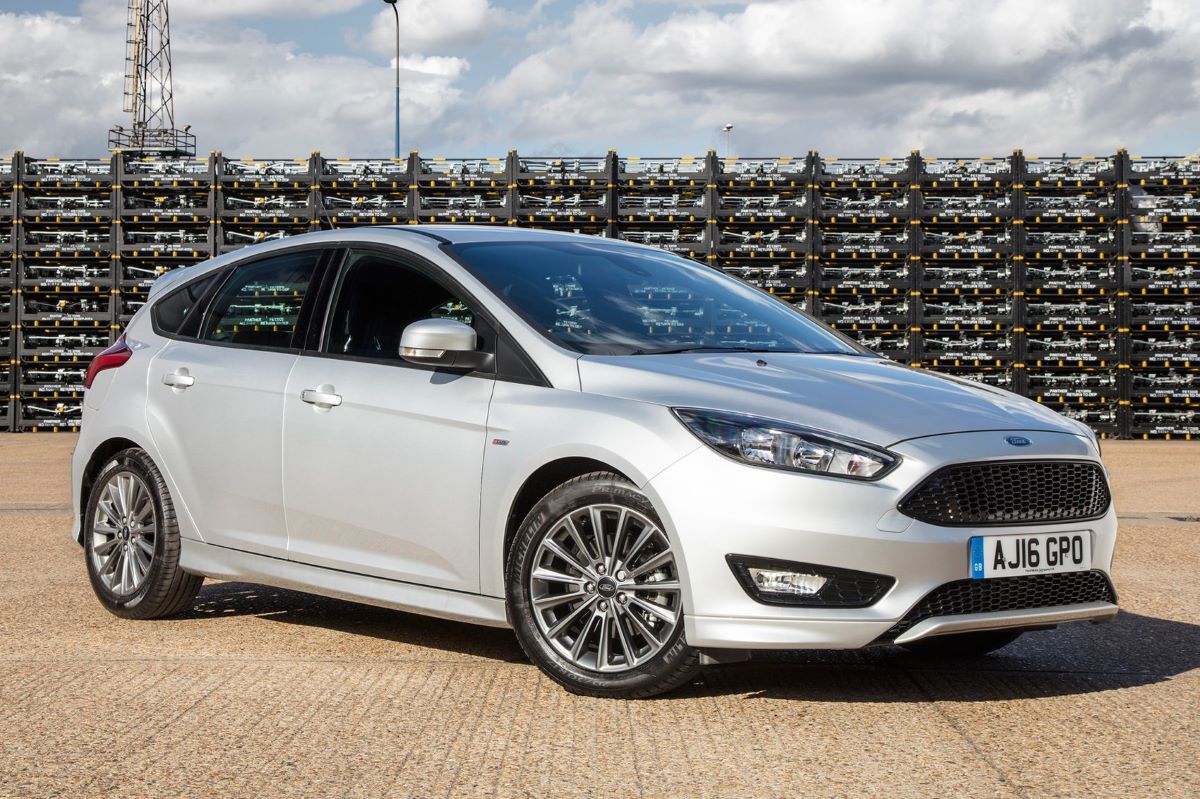
For 2017, the Focus lineup has been streamlined, with the removal of several configurations—most notably the hatchback paired with a 2.0-liter engine and manual transmission, a combination previously regarded as a favorite.
Now, the hatchback is only offered with a six-speed automatic transmission and is no longer available with the more efficient 1.0-liter turbocharged three-cylinder engine. On the plus side, the SEL trim level returns this year, positioned between the SE and Titanium trims.
Under the hood, none of the available powertrains offer thrilling performance. The standard 2.0-liter four-cylinder engine, producing 160 horsepower, lacks the punch found in many rivals’ turbocharged inline-fours. The optional 1.0-liter turbocharged three-cylinder, with 123 horsepower, is efficient but underpowered for the vehicle’s weight, resulting in slow acceleration.
Both engines can be paired with either a six-speed manual or automatic transmission. Despite this, the Focus stands out for its responsive steering and well-balanced chassis, which make it an enjoyable car to drive on winding roads. Its composed ride and relatively quiet cabin also lend it a more premium feel than its price might suggest.
Fuel economy figures for the Focus vary depending on the model and powertrain, and EPA testing procedures have changed over time. For the most current and accurate information, it’s best to consult the EPA’s website and use their “Find & Compare Cars” tool.
Inside, the Focus suffers from a dated and somewhat plasticky interior, which has not seen a major update in years. Lower trims come with few luxury features, while higher trims offer amenities such as heated leather front seats, a heated steering wheel, and dual-zone climate control. Unfortunately, practicality isn’t a strong suit.
Cabin storage is limited, and although the hatchback version offers folding rear seats to increase cargo space, achieving a flat load floor requires flipping the seat bottoms forward before folding the seatbacks down.
In terms of infotainment, the base S and SE trims are equipped with a basic Sync system that features a 4.2-inch screen controlled by voice commands and dashboard buttons.
It includes Bluetooth, a USB port, and an auxiliary audio input. The SEL and Titanium trims offer the upgraded Sync 3 infotainment system with an 8.0-inch touchscreen, which is easier to use and supports Apple CarPlay and Android Auto.
The only downside is the lack of an auxiliary audio input in the Sync 3 system. Overall, the 2017 Ford Focus still offers a solid drive and decent value, but newer competitors have clearly outpaced it in several key areas.
2017 BMW X5
The 2017 BMW X5 is yet another example of a model from the brand that has struggled with reliability concerns. This well-regarded mid-size SUV came with several powertrain options, including a plug-in hybrid variant.
The xDrive40e model, in particular, featured a four-cylinder engine paired with an electric motor and lithium-ion battery, delivering a combined 308 horsepower—an impressive figure for a vehicle in its class.
Despite its performance credentials, reliability proved to be a significant drawback. Consumer Reports assigned the 2017 X5 a low reliability score of just 1 out of 5. Key areas of concern included the climate control system, suspension, fuel system, and drivetrain.
Still, owners found plenty to like behind the wheel. The X5 received an outstanding 94 out of 100 for its driving experience, showing that BMW’s commitment to performance and handling resonated strongly, even in a model hampered by mechanical shortcomings.
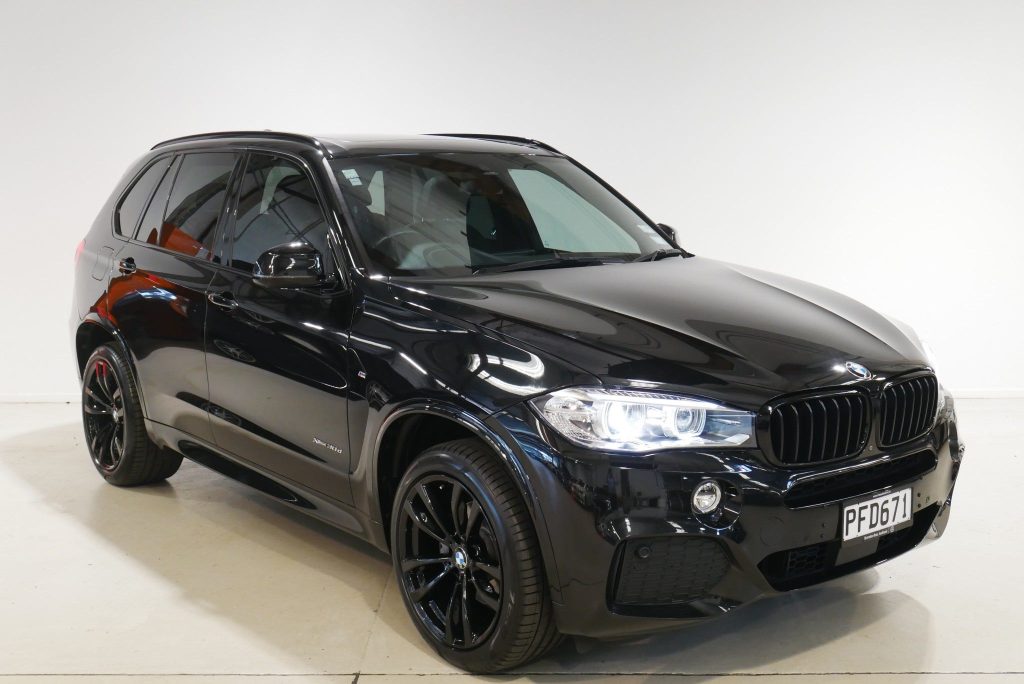
Opting for a used 2017 X5 offers significantly better value than purchasing a brand-new model. The 2018 version is largely unchanged, with the most notable update being the inclusion of a standard rearview camera—an option that was already available in 2017. By choosing the used model, buyers can save money while potentially gaining access to more features.
However, if you’d rather purchase a new vehicle at a price point closer to the 2017 X5’s average cost, there are several compelling alternatives worth considering. The 2018 Audi Q7, priced from $49,900, and the 2018 Acura MDX, starting at $44,200, both rank highly in the luxury midsize SUV segment.
The 2017 X5 belongs to a generation that began with the 2014 model and ran through 2018. BMW made only a few changes throughout this span. Noteworthy updates include the introduction of the xDrive40e plug-in hybrid for 2016, the addition of a Wi-Fi hotspot and wireless device charging to the options list in 2017, and the inclusion of a standard rearview camera in 2018.
Other than these changes, the models within this generation are largely similar and achieve nearly identical rankings. For shoppers looking to save even more, earlier model years such as 2014, 2015, or 2016 may offer nearly the same experience at a lower cost.

